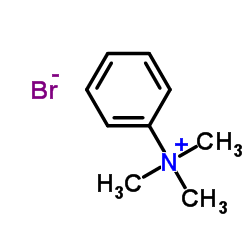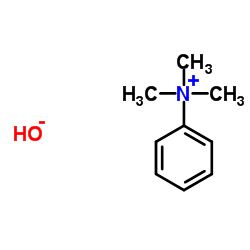| 结构式 | 名称/CAS号 | 全部文献 |
|---|---|---|
 |
苯基三甲基溴化铵
CAS:16056-11-4 |
|
 |
三甲基苯基氢氧化铵
CAS:1899-02-1 |
| 结构式 | 名称/CAS号 | 全部文献 |
|---|---|---|
 |
苯基三甲基溴化铵
CAS:16056-11-4 |
|
 |
三甲基苯基氢氧化铵
CAS:1899-02-1 |